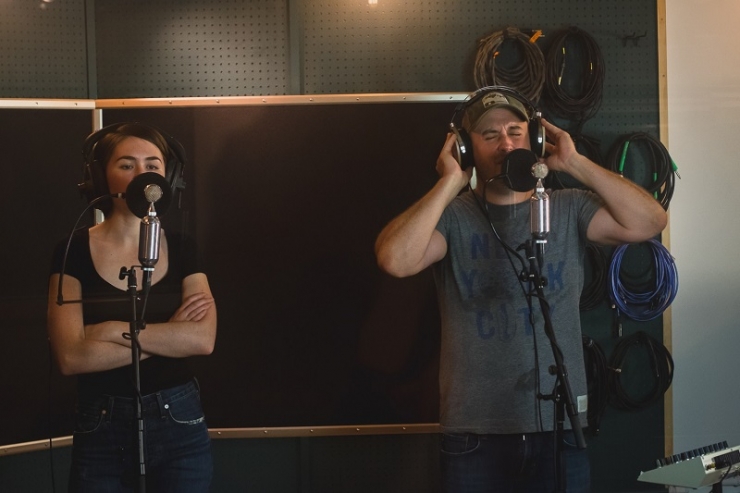
Article courtesy of Vintage King. Full version here.
Tracking vocals is hands-down the hardest part of the recording process, and not just because all vocalists are divas (kidding!). The voice is the only instrument you can’t tune. It’s also the most intimate instrument to perform in front of other people. The most important thing to remember when tracking vocals is that it’s all about the performance. You can fix a bad note in post, but there’s nothing you can do to turn a nervous performance into confident one. It’s ok if the singer is a little off-pitch, as long as they mean it.
“To play a wrong note is insignificant; to play without passion is inexcusable.” – Ludwig van Beethoven
Many vocalists prefer to sing along to a guide track. After setting levels, tell the artist you’re going to record a scratch track. Tell them you’re not going to keep it — you just want to record one full pass of the songs a guide. That’s a lie. By telling the vocalist you’re not going to use it, you lower their inhibitions. They feel like it’s OK to go for it. To be more creative. To make mistakes.
Many engineers and producers find that the magic happens within the first few takes, and everything after that is downhill. It’s so easy for a vocalist to over-analyze their performance. It’s your job to keep them out of their own head. After having them record the guide track, apply some light pitch correction. Then, let the vocalist sing along to tuned guide track. You’re more confident when you’re singing along to the radio than you are by yourself, right? So are vocalists.
Have your vocalist record two or three full takes so you can “comp” them together afterwards. Comping is the process of taking the best parts of multiple takes and Frankenstein-ing them together to create one perfect vocal take. After getting a few solid vocal takes, it’s common practice to “double track” the vocals. Double tracking means you record another take and blend it in with the original comp to help beef up the lead vocal. Mute the guide vocal, and have the vocalist try to match the comp this time.
At this point, you should have a pretty solid vocal recording for your song, but your work doesn’t end here! Check back next week for a new blog on how to handle vocals throughout the mixing process.
